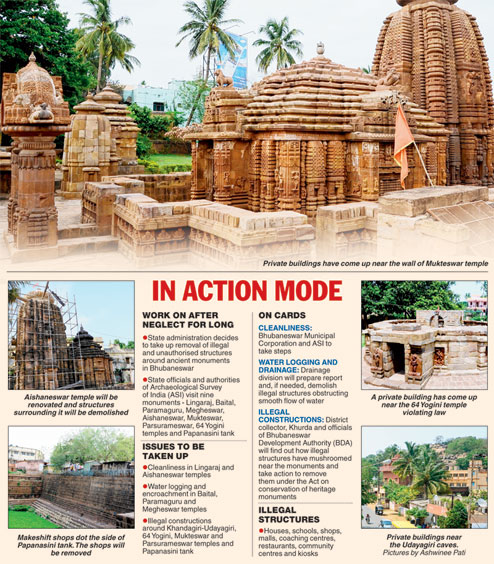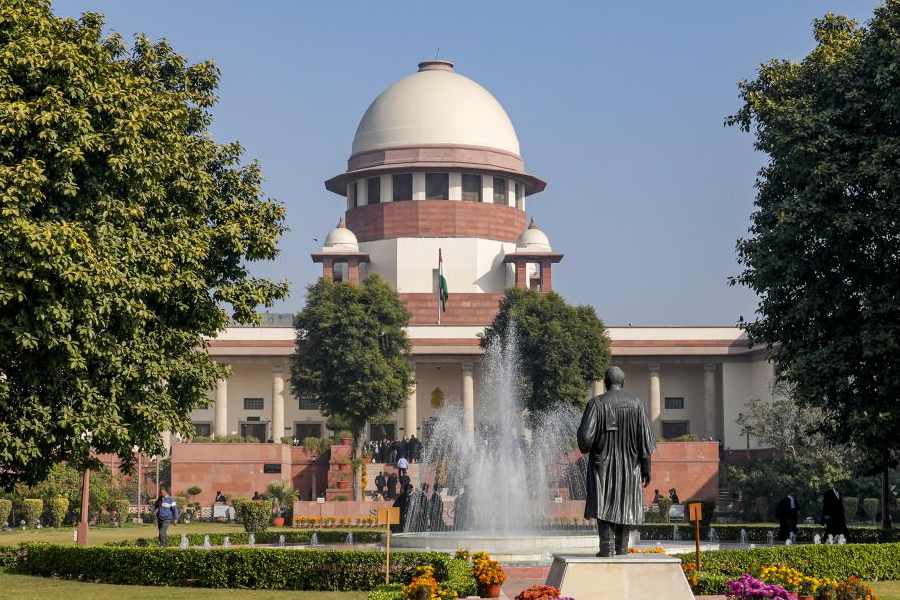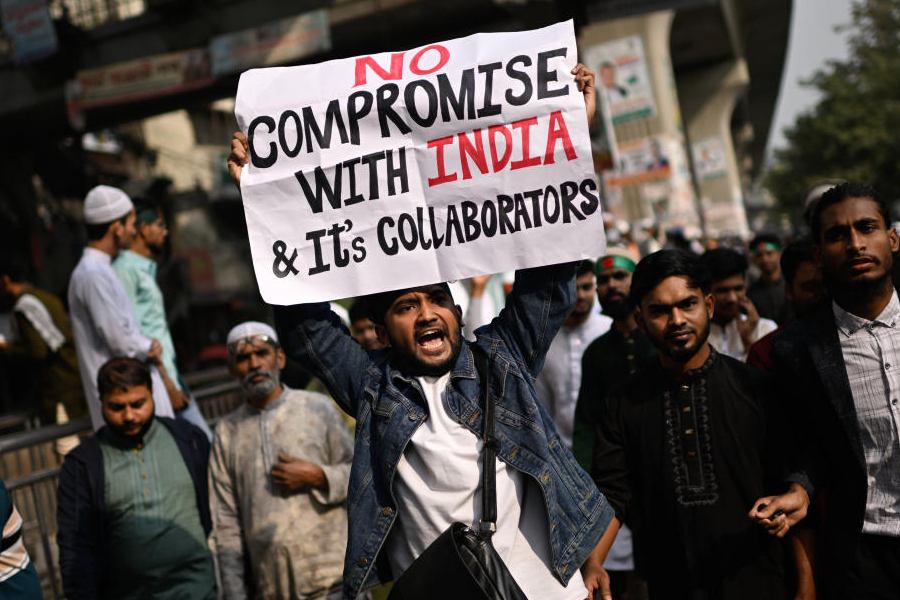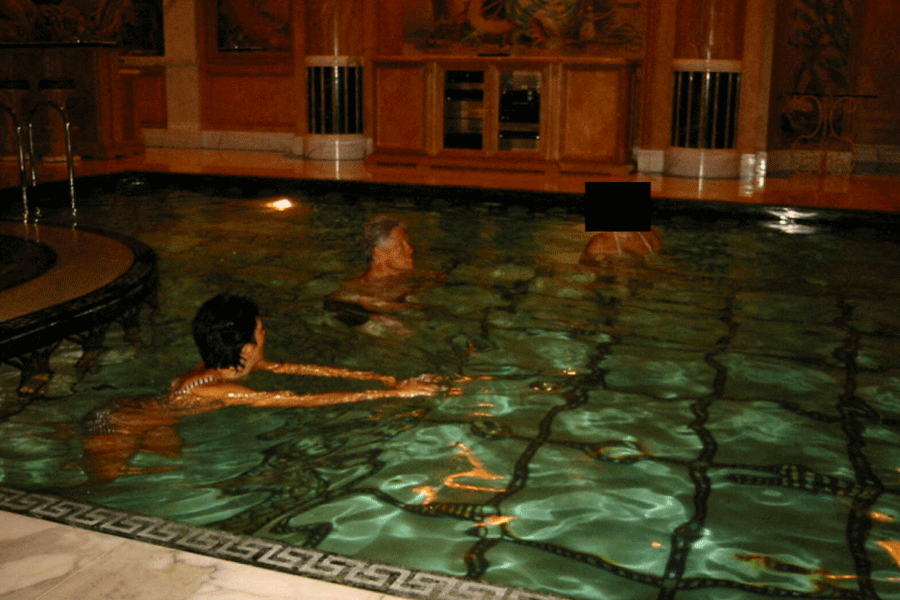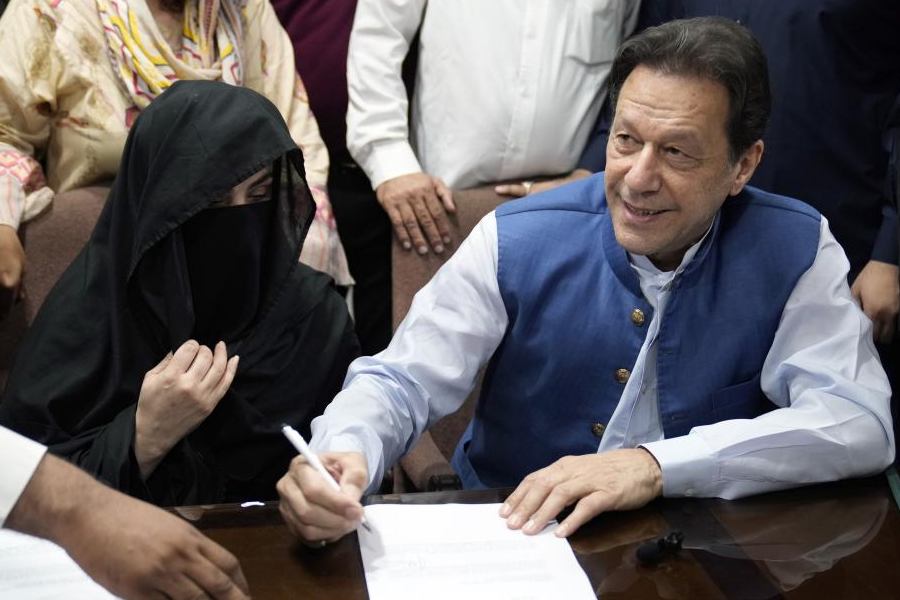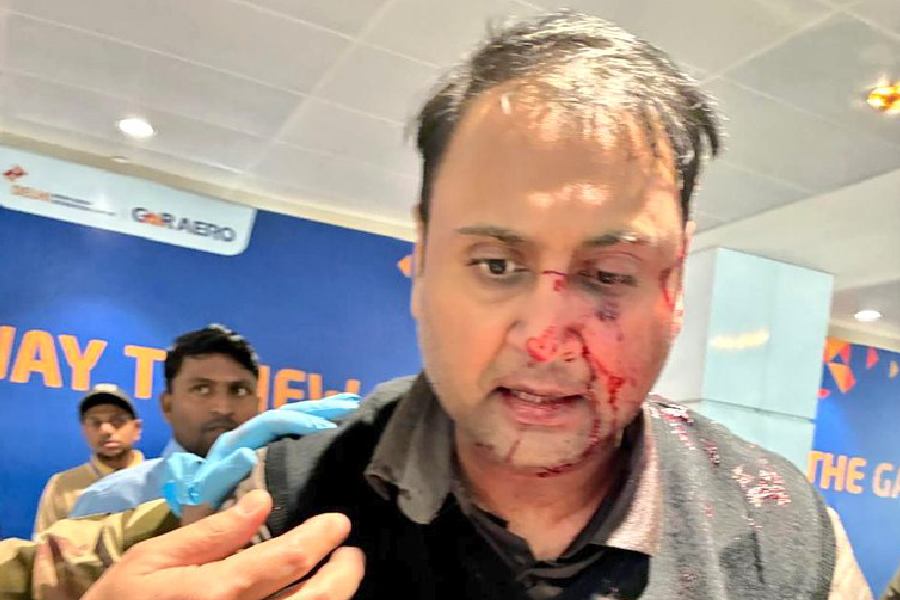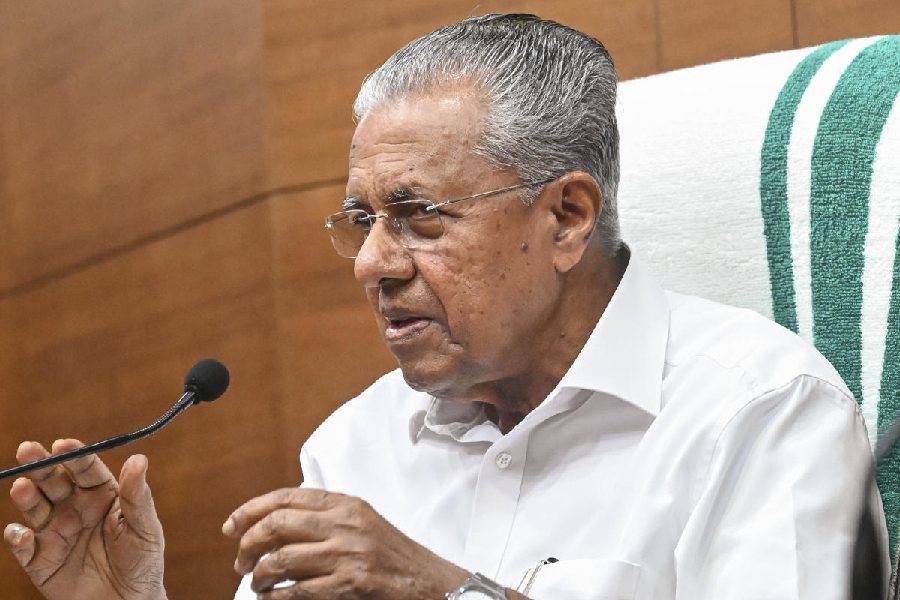 |
Bhubaneswar, May 14: State government officials and experts from the Archaeological Survey of India (ASI) today devised a plan to free monuments in the city of encroachment.
The team visited nine protected sites to study the ground situation and discussed about encroachment in and around Khandagiri and Udayagiri caves in detail.
Revenue divisional commissioner (central range) Arabinda Padhee said: “A committee has been formed of which the director of culture will be convenor and the ASI’s superintending archaeologist the co-convenor to take on the illegal structures around ancient monuments. Today, we discussed the situation of the monuments in Bhubaneswar. We will later take up the issues of Puri and Konark.”
Padhee said: “While illegal structures are found near all monuments concerned, presence of a big mall and a school building near the Udayagiri caves, apart from shops, restaurants and a community centre (kalyan mandap), was a surprising discovery near Mukteswar and Parasurameswar.”
Sources said the Khurda district collector and the BDA authorities were asked to explain how these structures were coming up violating norms such as the Ancient Monuments and Archaeological Sites and Remains (Amendment and Validation) Act, 2010. The ASI was also asked to submit its report.
Convenor of the committee and director of culture Sushil Kumar Das said: “The drainage problem near Baital and Megheswar will be studied by engineers of the drainage division.”
The Aishaneswar temple inside the BMC blood bank complex will have a separate boundary wall with heritage designs on it. The dilapidated structures inside the blood bank will be removed and the area will be given a special look matching the landscape design. The Papanasini pond and the historical structures near it will be renovated and the makeshift shops near its sidewalls would be removed. The ASI will shift the iron-grill boundary wall towards the road so that people do not urinate near the wall.
The BMC will collaborate with the ASI to clean the pond. The water inside the pond is polluted and filthy.
During their visit to various monuments, the officials found many violations of building regulations. They found illegal shops, coaching centres and even community halls near the Mukteswar, Parsurameswar and Megheswar temples. The revenue divisional commissioner and the director of culture also visited 64 Yogini temple in the evening and found illegal constructions near it.
At Sisupalgarh, the ancient fortified monument on the city outskirts, the state government has decided to prepare an inventory of the land of the revenue department, private persons and the ASI inside the protected area. The land belongs to people of five nearby villages.
While the state government officials are gearing up to save the ancient monuments from the grip of illegal structures, the ASI, on the other hand, told The Telegraph that they had filed an FIR for every violation of the Ancient Monuments and Archaeological Sites and Remains (Amendment and Validation) Act. Superintending archaeologist, Bhubaneswar circle, A.K. Patel, said: “We have filed complaints with the local police authorities. The local police should come forward to help us in nabbing the culprits. In cases such as Sisupalgarh, the state government should make land available for conservation activities so that more and more excavation processes can be taken up.”
Conservationist Surya Narayan Das said: “Though it is very late, the state government has taken up a right issue and with the support of young administrators, the monuments can be kept in good health. It will be a lesson to follow for other revenue divisions.”

